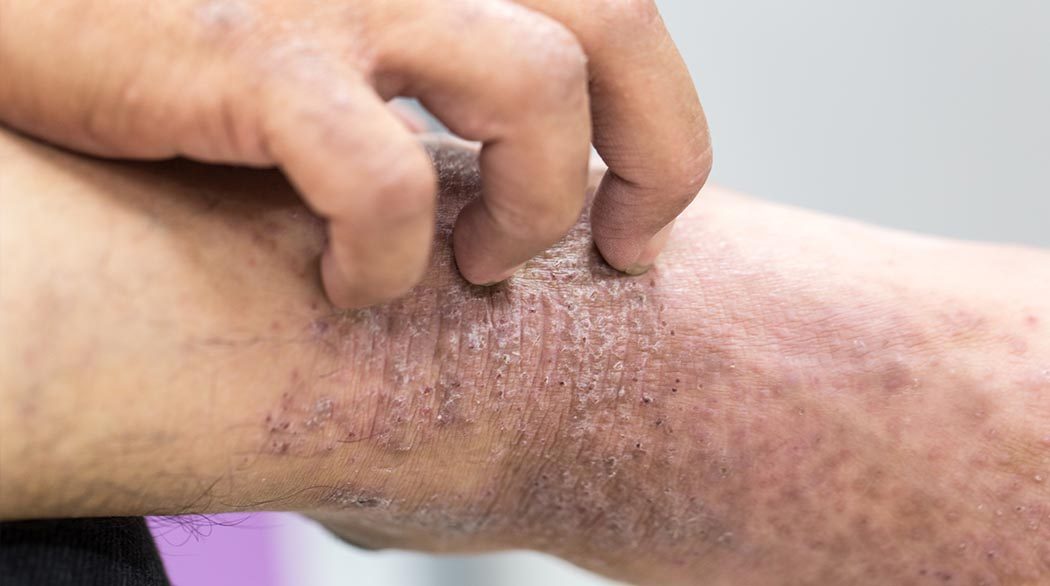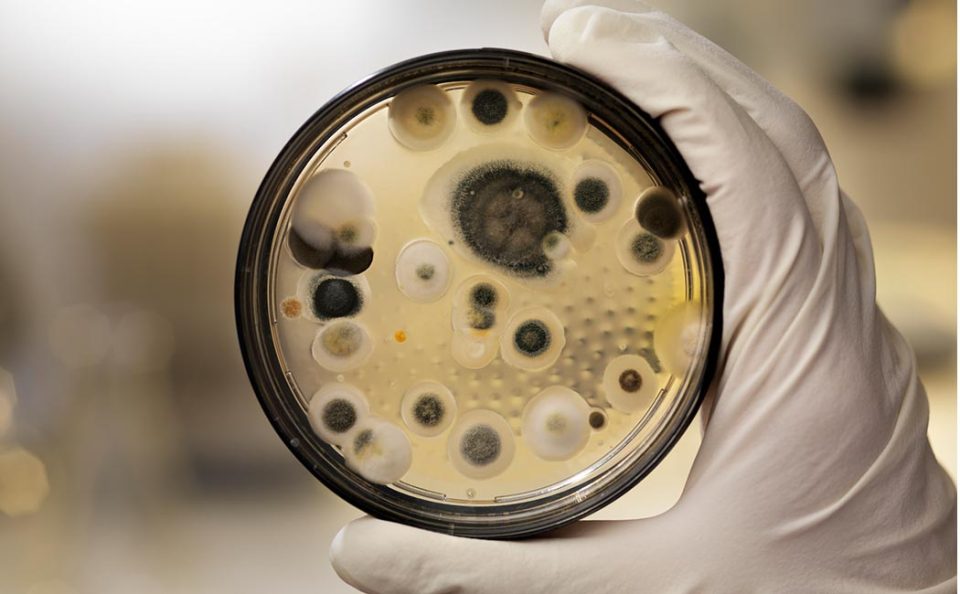In this article we will be discussing different types of mould and the health problems they cause. We are actually surrounded by mould exposures daily, we don’t just have to live in a house with a rising damp issue. Health effects are numerous, wheezing, runny nose, sinusitis, allergic reactions and other respiratory symptoms could all be caused by high levels of mould toxicity.
In a previous article, Antibiotic Resistance we showed that antibiotics are basically mould infections that long term exposure to are not beneficial to human health. When Alexander Flemming found that penicillium mould destroyed certain types of bacteria, it signalled a new medical paradigm.
Long term use of ‘mould antibiotics’ are not beneficial for anyone, and leave residue mould infections in patients. But what is mould, how many different species are there and what are the symptoms of toxic mould?
How much mould exposure is dangerous?
There are many different types of mould, but since the discovery of penicillin mould allergies have increased. Many of the symptoms we see around us today are symptoms of mould exposure. Health Bunker will list the types of mould that are used to make antibiotics from, along with the symptoms that toxic mould causes.
What is Toxic Mould Syndrome?
Being exposed to mould spores can cause a multitude of debilitating illnesses, the immune system responds with sinus and lung issues. Mycotoxins are poisons produced by mould and enter the body via skin contact, sinuses, lungs, digestive tract and through antibiotic drugs.
Mould Sensitivity
Some people are particularly susceptible to mould, while most develop symptoms over time, due to being constantly exposed to mould. Symptoms include;
- Chest congestion
- A runny or blocked nose
- Watery red eyes or sore eyes
- A dry cough and sneezing
- Skin rashes
- Sore throat
- Sinusitis
- Wheezing
- Headaches.



Mould Related Infections
If you have a compromised immune system or existing lung illnesses you will be susceptable, mould could cause respiratory conditions in normal healthy people. Mould can also increase the severity of Asthma attacks, and could also be linked in developing Asthma in certain people and other respiratory diseases. Symptoms include;
- Shortness of breath
- Upper Respiratory tract problems
- Asthma
- Lung Conditions
- Wheezing.
Severe and Chronic Mould Conditions
Some types of mould produce ‘mycotoxins’, a very dangerous toxic by-product which can be absorbed by the skin, airways and intestinal lining. The amount of mould or mycotoxins exposure may lead to severe and sometimes deadly conditions like;
- Cancers
- Pulmonary Fibrosis (scarring of the lungs)
- Pulmonary bleeding
- Immune and blood disorders
- Neurotoxicity (toxic nervous system)
- Digestive issues
- Heart conditions
Toxic Mould Exposure Symptoms
There are many types of mould and some are more dangerous than others. They can be broken down into 3 main areas;
- Allergenic Moulds, that affect people susceptible to allergies and asthma. Up to 30% of the population could have an allergy to mould to varying degrees. The mould increases the ‘mast cell’ activity thereby causing inflammation responses in the respiratory system. If you have any respiratory issues it may be well advised to get a blood test for mould and buy an air purifier.
- Pathogenic Moulds, can cause certain diseases. Healthy individuals with good immune function will probably fight off these pathogens. People with compromised immune systems will be targeted by pathogenic mould.
- Toxic Moulds, produce poisonous chemicals called mycotoxins we mentioned above. They are dangerous to humans. Toxic mould intentionally harm living things rather than it being a side effect of contact. Some of the most deadly chemical toxins on earth are mycotoxins.
10 Different Types of Toxic Mould
- Stachybotrys Chartarum otherwise known as Black Mould. It is one of the most toxic mould species and is normally found inside houses. The mycotoxins that this species can produce can cause; lungs to bleed, which can be fatal. Black mould is very difficult to detect as it develops behind walls, under ceilings and is resistant to air sampling.
- Memnoniella is also known as Black Mould and causes the same health effects. Its spores are released in chains as opposed to clumps.
- Aspergillus, grey of green flecks found on wooden surfaces. There are 20 Aspergillus species in total and will cause allergies, serious asthmatic reactions, hay fever, or lung infections. Every species of Aspergillus produces mycotoxins which are a health hazard.
- Penicillium, some are beneficial, some harmful. Penicillium causes allergies, and can also be troublesome for people with weakened immune systems.
- Alternaria is one of the most abundant toxic moulds, it includes many different species. Alternaria is extremely troublesome for people with Asthma or hay fever when they inhale Alternaria spores.
- Geotrichum appears as a white powdery substance. It spreads very fast and is associated with health conditions like, tuberculosis and pulmonary infections. Geotrichum breeds in moist conditions, and its spores spread easily in the air. It is an allergen causing itchy eyes, fatigue, and chronic headaches.
- Chaetomium is allergic, found in water damaged dry walls. Chaetomium has a musty smelling odor, and flourishes in wet dark environments. The spores it releases cause many health problems like; autoimmune diseases, neurological damage, and allergic reactions, such as difficulty breathing and red watery eyes.
- Bipolaris can grow rapidly, taking only 5 days to fully mature. Bipolaris is whiteish, greyish brown but eventually turns dark olive. It looks fluffy and grows outside in grasses and soil. It also thrives in water damaged items like carpets, wood floors, and planets. It is well known to cause asthma, wheezing, stuffy nose, coughing, when it’s spores are inhaled.
- Trichoderma is white with green patches, It’s an allergic mould that thrives in moist areas. Trichoderma has 5 different subspecies, some of which are associated with liver and pulmonary infections.
- Fusarium can be pink, red or white and it is capable of adapting in colder temperatures. It grows mostly on food products, compost, carpets, wallpaper, and other water damaged items. Exposure to Fusarium can lead to allergic reactions, sore throat, dermatitis, itchy eyes, and runny nose. More serious conditions include, brain abscesses, bone infections, nervous system damage and internal bleeding.
Toxic Mould and Antibiotics in The Food Chain
Globally, around 70% of all antibiotics are added to animal feed, we then eat the end products. So in effect we’re eating or drinking pharmaceuticals manufactured for cows, pigs, sheep, chicken and other livestock. We are taking in massive amounts of Penicillin and other antibiotics that are used to enhance the growth and health of livestock.

Here’s a few antibiotics that are in our food chain along with human side effects;
Procaine Penicillin human side effects;
- Diarrhea that is watery or bloody
- Peeling skin
- Severe pain
- Dizziness
- Joint, muscle pain
- Pounding heartbeats
- Numbness, tingling, pain, swelling or redness in arms and legs.
Chlortetracycline human side effects;
- Gastrointestinal Issues
- Dental hypoplasia
- Bone deformity
- Pregnant women may produce Hepatotoxicity or Drug Induced Liver Damage.
Terramycin (oxytetracycline) human side effects;
- Nausea
- Upset stomach
- Vomiting
- Diarrhea
- Light sensitivity
- Rashes
- Swelling.
How to Treat Mould
Ozone kills mould, there are several ways to use ozone. Ozone air purifiers kill airborne spores. But for individuals Ozone Multi Pass, Ozone Injections, Ozonated Water, Ozone Saunas are all fantastic for eliminating the body of mould.
A quality HEPA air purifier will remove airborne mould spores. If the mould is embedded and cannot be removed from a surface, an air purifier can help remove odors. Those in Damp Environments should use a purifier with an antimicrobial filter to prevent mould growth on the filter.
A low histamine, tyramine, salicylate, diet will help reduce mould and inflammation, because it reduces mast cell activity.
Mould can be a killer, so much so that the mycotoxins they release are used in Biowarfare weapons. Antibiotics are made from mould, more than $45bn is spent putting them into the food chain for us to eat. Mould can cause a multitude of different illnesses including cancer and COPD. As I have said in previous articles, intelligent people run this country (apparently, I beg to differ), or should I say powerful people run this country and global manufacturing companies. Can’t they see that their products are causing all sorts of damage to our health, or don’t they care.
Every Health Bunker research article we put out there highlights certain things that seem to cause every one of the diseases decimating societies around the world.
Look at the symtoms of mould;
- Shortness of breath
- Upper Respiratory tract problems
- Asthma
- Lung Conditions
- Wheezing
What do these symtoms remind you of?


